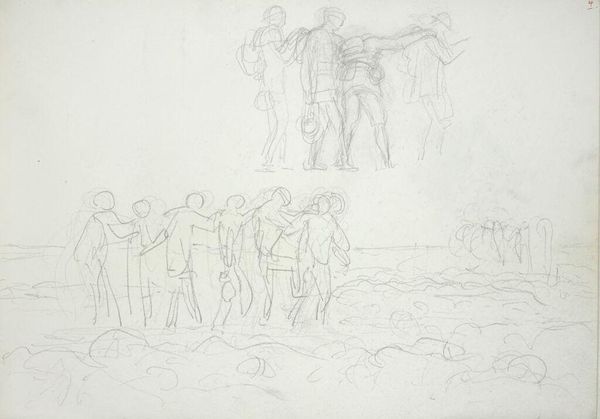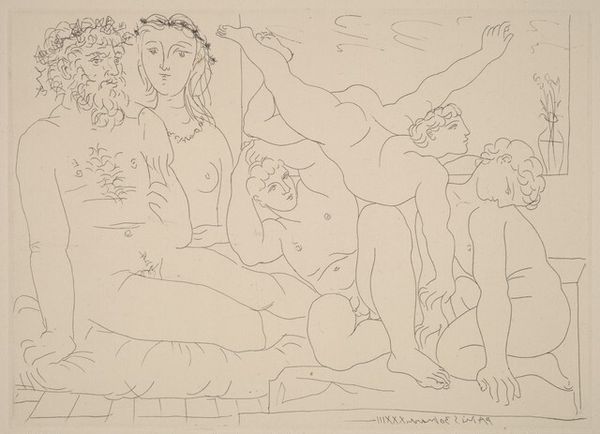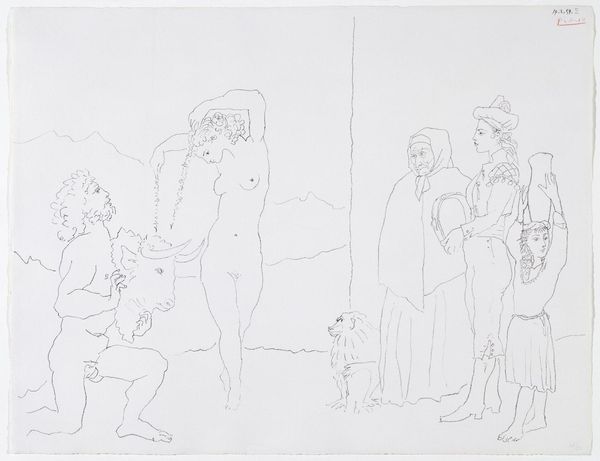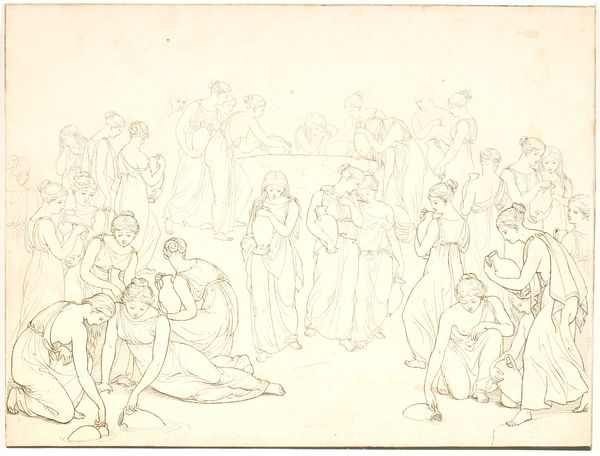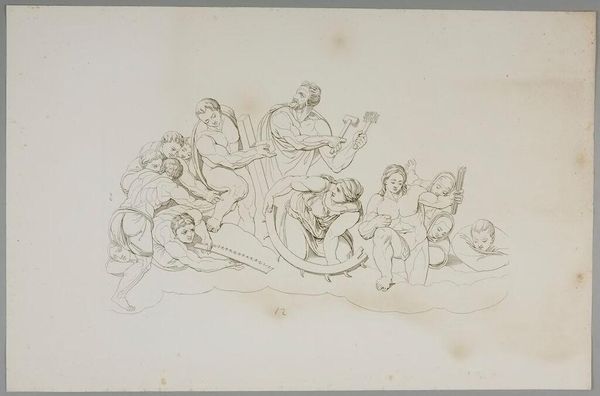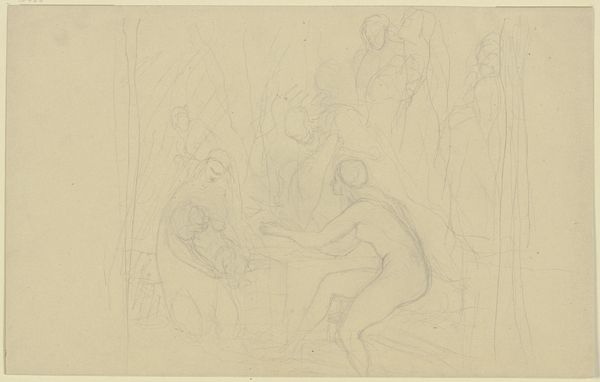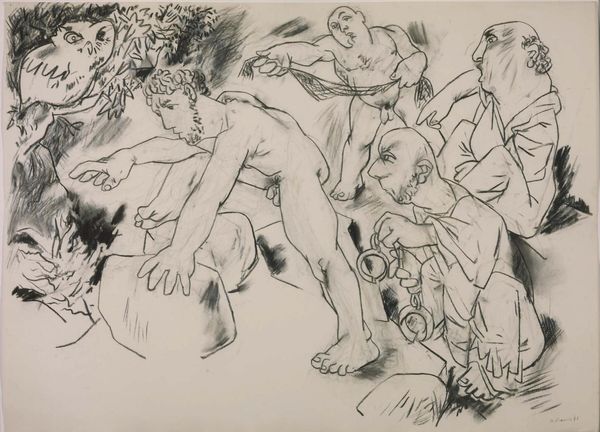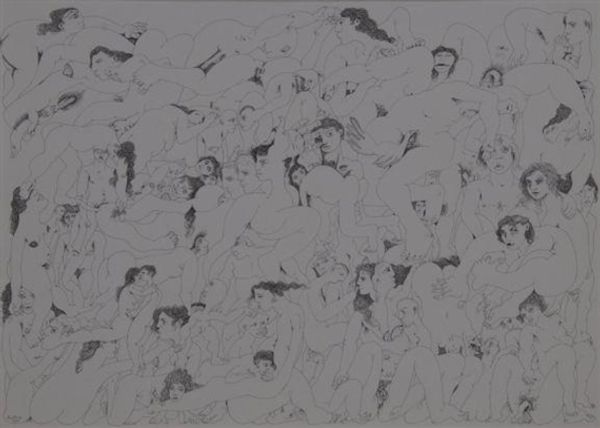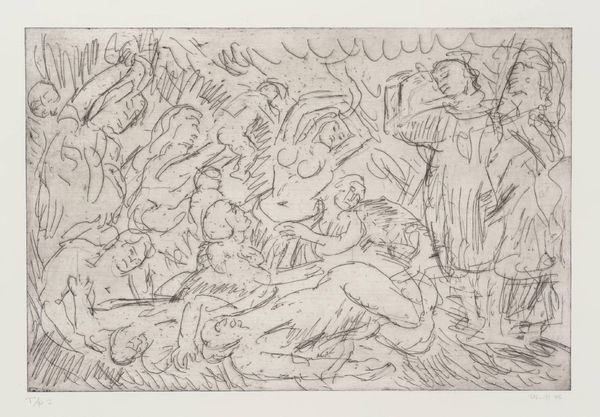
drawing
#
drawing
#
landscape
#
classical-realism
#
figuration
#
history-painting
#
academic-art
#
nude
Dimensions: overall (approximate): 31.6 x 45.5 cm (12 7/16 x 17 15/16 in.)
Copyright: National Gallery of Art: CC0 1.0
Curator: This sketch, simply titled "After Mantegna," by Larry Day, presents a complex arrangement of figures reminiscent of classical scenes. It’s a study in graphite, showcasing a dense composition of draped and nude bodies. Editor: My first impression is the almost unsettling density of the figures, there is this sense of suspended drama, all rendered in incredibly precise detail. It's compelling, but a little overwhelming to take it all in. Curator: Larry Day's work, especially this piece referencing Mantegna, engages directly with the historical legacy of Western art, doesn't it? It's fascinating how Day reinterprets canonical themes through a contemporary lens, echoing Mantegna but in a completely new historical era. I read it as this intersection of classical ideals with contemporary perspectives on the body and power dynamics. Editor: The layering of historical symbolism is very evocative here. The figure groupings certainly invoke classical bacchanals and related scenes of mythological debauchery. I am struck by the continuous symbolic narrative and imagery depicted across cultures for millennia. And you cannot help but ask, why does this tableau persist? What is the undercurrent that calls the human mind back again and again to this moment of release? Curator: Exactly. Think about the visual language being used here. The idealization of the human form clashes, in a way, with the almost chaotic arrangement of bodies, raising questions about desire, control, and even the gaze itself. Are these bodies celebrated, or are they being put on display for something else? Editor: Precisely. The composition leads the eye around a circle of ritual. This sketch makes us, as viewers, aware of the artist acting as an echo across time. Each of these carefully placed figures serves as an icon of liberation or suffering, mirroring life's polarities. There is beauty here but it rests on the edge of some darker chaos. Curator: That's where the work transcends mere reproduction. It invites a critical examination of the power structures embedded in historical and contemporary representations. It makes you ponder. Editor: Absolutely, Day presents not just a reproduction but a lens. A historical artifact reframed to remind us that archetypes have stories, and it’s within those symbolic echoes that art truly speaks.
Comments
No comments
Be the first to comment and join the conversation on the ultimate creative platform.
